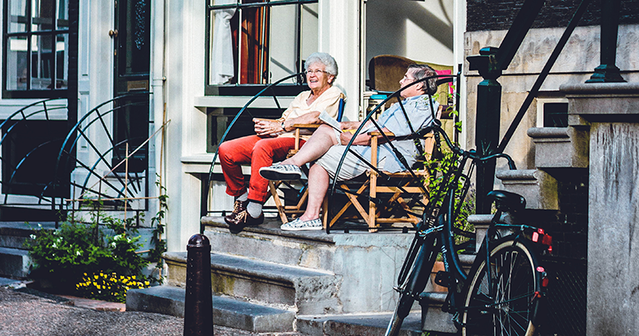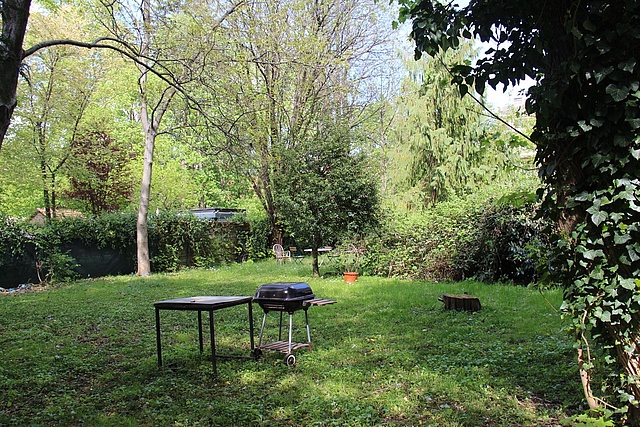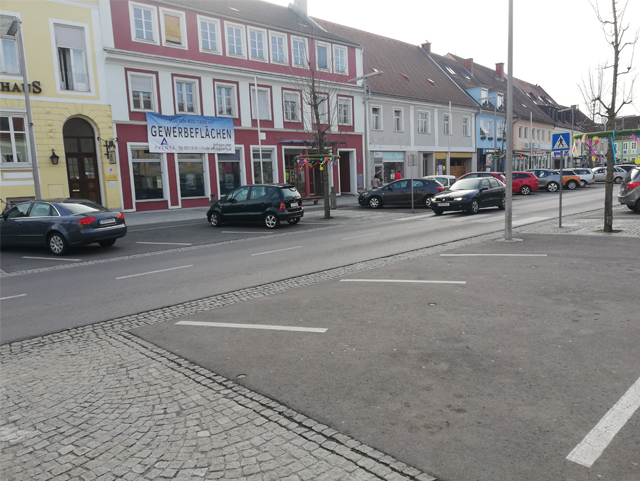Automous Lifestyles in Old Age in Smart City Districts

© blog.careum.ch, Anna Hegedüs
In the context of the dissertation "Autonomous Living in Old Age in Smart City Neighbourhoods", measures are determined to support self-determined living in the form of autonomy and flexibility for people with age-related limitations in their familiar living environment. In order to identify potentials for supporting independent living in old age, a survey was conducted among 307 people in the 65+ target group. Questions were asked in the areas of digitalisation, social life, mobility and infrastructure, in relation to relevance and habit. Thus, an age-friendly design of the built environment and public space in combination with digital assistance and alternative forms of living can be an answer to the architectural challenges for independent living in old age and demographic change.
Supervision:
Aglaée Degros, Institute of Urbanism, TU Graz
"Gründerzeit" Inner Courtyards in Graz

© Petra Kubin, BA
The Gründerzeit is particularly important for the urban development of the city of Graz, as a large part of the city was created in this period in its still existing structure. In the course of this, large green areas were created inside the perimeter block development. These still exist today. Although they make up a large part of the inner-city green spaces, the background to their creation has remained unnoticed in the literature until now.
This initial situation leads to the research question: "How can Gründerzeit inner courtyards in Graz be located in history, how are they used today and what potentials are there for the future?
In order to answer the first part of the research question, the developments of building laws and building ordinances from the beginning of the Gründerzeit to the present day were presented taking into account the urban planning process. In addition, city maps from different years were compared and graphically processed. The evaluation of the archive files of individual properties serves the evaluation of the historical planning of inner courtyards.
In order to answer the second part of the research question, a photo of the status quo was taken with the help of a separate photo documentation and then evaluated with regard to the actual uses. Furthermore, a separate analysis of the Graz housing market over 12 months was carried out by observing housing advertisements. A survey on the use of the inner courtyard also revealed the mood of the residents.
The processing of the research question should lead to a first scientific recording of the urban development of the Gründerzeit with regard to inner courtyards. This, together with the documentation of current trends in use, should also serve as a tool for future urban planning. A future scenario should make visible which potential is hidden in the inner courtyards.
Supervision:
Aglaée Degros, Institute of Urbanism, TU Gra
Cycle Traffic in Town Centres
Influence on the location factor of business premises

© Jürgen Sorger, MSc
Mass motorisation, increasing consumption and function-separating spatial planning are having negative economic and ecological consequences today. Shopping centres (shopping centres) and food markets on high-performance roads are creating longer and longer routes for increasingly energy-inefficient (heavier) vehicles. Negative effects are obvious: land sealing, congestion, emissions, energy and resource consumption and economic pressure on the centres of small towns. Today's car-savvy customers make frequent use of the commercial enterprises designed for car accessibility - they avoid the small-scale and for the car impractical town centre. Local centers feel the frequency decrease. A vicious circle for business in many communities. The non-integrated edge of the village flourishes, the charming urban centre dies out. Vitality and quality of life are also lost - in the worst case, permanent vacancies characterise the townscape.
The same topics were always discussed in the seven cycle traffic concepts developed with municipalities: The question of the necessity of car parking is categorically met with the needs of business enterprises. In the discussion and planning processes, however, it became clear that cycling can also make an economic contribution to revitalising the town centre. What is lacking are sound descriptions and clear cause-and-effect relationships on how cycling has a positive effect on businesses located in town centres and on vacant business premises.
Due to the lack of these basic principles, it is difficult for decision-makers in municipalities to raise the conditions for the promising bicycle to the standard of motor vehicle traffic.
In this dissertation project these cause-effect relationships are worked out. Research fields are municipalities with approximately 5,000 to 25,000 inhabitants - potential areas with a small national town character.
Based on the findings, strategic recommendations for action can then be made accurately and target group-specifically and indicators for determining the achievement of objectives can be determined.
Supervision:
Aglaée Degros, Institute of Urbanism, TU Graz
DI Dr. Markus Frewein, verkehrplus GmbH
Sponsor:
Austrian Research Promotion Agency (FFG)
Partner:
verkehrplus GmbH
Spatial Justice within Strategic Metropolitan Planning.
An analysis of ideas, actor constellations, and spatial planning projects.
Nicole Kirchberger, Mag. Arch. MSc.
Aiming for justice is at the core of strategic planning of many cities and regions. Yet it is often unclear how justice can be realised with spatial planning. Within my PhD research I want to analyse not only how justice is discursively constructed but also implemented within strategic metropolitan planning projects. The content of the PhD includes the elaboration of the methodological framework, a theoretical embedding of the topic, one in depth case study (Amsterdam Metropolitan Area) to illustrate the topic as well as a collection of examples of interesting practices.Considering justice from a spatial perspective, space can be conceptualized as material configurations that are constantly socially produced and negotiated. Planning practices that aim for justice try to evince and balance hierarchies and inequities inscribed in space. Within planning, the concept of (spatial) justice offers possibilities for political action (Harvey 1973, Soja 2010, Fainstein 2010).The metropolitan level, a crucial scale to deal with issues of justice (e.g. provision of public spaces, transportation equity…), is dominated by informal governance arrangements that do not necessarily enhance democratic planning (Allmendinger and Haughton 2010). Negotiations and decisions on the metropolitan level happen democratically non-legitimized collaborations (mostly), resulting in non-transparent political processes. Very few cases show different forms of governance that allow more democratic processes.The proposed methodological framework combines the review of both, the level of ideas (of justice) in planning as well as the level of actor constellations and institutional settings. Additionally, this investigation is embedded in an analysis of the planning context and a sociodemographic analysis of the chosen metropolitan area. In particular, this includes discourse analyses of strategic visions and plans as well as the review of co-productive forms of governance of strategic planning processes including different actors (public, private, grassroots, …). A specific interest lies on formats of coordinative and communicative discourse on the city regional-level, to understand if and how democratic and deliberative forms of planning work on this level. Debates on spatial justice in urban theory originate from more political-economically approaches (Fischer 2009). This work applies “Discursive Institutionalism” (Carstensen and Schmidt 2016) to planning processes, to add to the discursively oriented communicative dimension of spatial justice and most importantly, to understand, what justice in spatial planning means and how spatial justice comes into being.
Supervision
Aglaée Degros, Institute of Urbanism, TU Graz
Ao.Univ.Prof. Mag. Dr. Alexander Hamedinger, ISRA (Center of Sociology), TU Vienna
References
Allmendinger, P. and Graham, H. (2010). ‘Spatial Planning, Devolution, and New Planning Spaces’ Environment and Planning C, 28 (5), 803–818.
Fainstein, S. (2010). The just city. Ithaca: Cornell University Press.
Harvey, D. (1973). Social justice and the city. London: Arnold.
Fischer, F. (2009). Discursive planning: social justice as discourse. In P. Marcuse, et al. (Eds.), Searching for the just city: debates in urban theory and practice. London [a.o.]: Routledge.
Carstensen, M. and Schmidt, V. (2016). Power through, over and in ideas: conceptualizing ideational power in discursive institutionalism. Journal of European Public Policy, 23(3), 318–337.
Soja, E. (2010). Seeking spatial justice. Minneapolis, Minn. [a.o.]: University of Minnesota Pr.